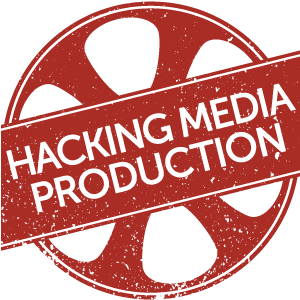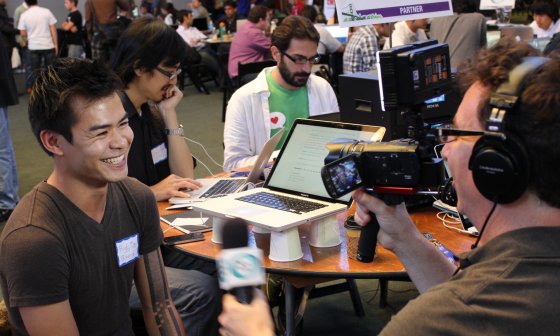Interview with PR LEADS’ Dan Janal (Time: 26 min.) about getting getting quoted when you pitch a journalist.
 Dan Janal (@prleads) is the founder and President of PR LEADS and the author of “Reporters Are Looking for YOU!” PR LEADS is a great service that matches journalists looking for sources of stories with people who could be sources for these stories, or at least they know people who could be sources for these stories. PR LEADS is a pay for service, $99 a month to be a subscriber, although it’s free for journalists to submit queries. I have used a competitive service, Help a Reporter, to great success. That service is free for everyone to use. Janal argues that because his service is paid for journalists are not inundated with too many responses. Plus, Janal offers one-on-one advice and service to journalists and sources to improve their chances of getting responses and getting quoted. PR LEADS is distributed through ProfNet.
Dan Janal (@prleads) is the founder and President of PR LEADS and the author of “Reporters Are Looking for YOU!” PR LEADS is a great service that matches journalists looking for sources of stories with people who could be sources for these stories, or at least they know people who could be sources for these stories. PR LEADS is a pay for service, $99 a month to be a subscriber, although it’s free for journalists to submit queries. I have used a competitive service, Help a Reporter, to great success. That service is free for everyone to use. Janal argues that because his service is paid for journalists are not inundated with too many responses. Plus, Janal offers one-on-one advice and service to journalists and sources to improve their chances of getting responses and getting quoted. PR LEADS is distributed through ProfNet.
 Before you go to Janal for personal advice, read his tips below on how to respond to queries to better your chances of being quoted.
Before you go to Janal for personal advice, read his tips below on how to respond to queries to better your chances of being quoted.
Top Tips to Being Quoted by a Journalist
 Sign up for source seeking services: First step is to simply sign up for these reporter-source matchmaking services – Help a Reporter and PR LEADS. With PR LEADS you can specify the categories that you want to receive queries. This is a much better way of building relationships with reporters as opposed to blindly pitching reporters when they’re not seeking out a specific story.
Sign up for source seeking services: First step is to simply sign up for these reporter-source matchmaking services – Help a Reporter and PR LEADS. With PR LEADS you can specify the categories that you want to receive queries. This is a much better way of building relationships with reporters as opposed to blindly pitching reporters when they’re not seeking out a specific story.
Actually respond to the question yourself: One of the most common mistakes in responding to a query is a PR representative will say they have someone who would be great to answer the question and they’d be happy to set up an interview. Instead, just answer the question yourself. If the PR person responds, have them include a quote from the individual that answers the question. No need to say, “I’m happy to answer further questions or set up an interview.” That’s implied if you’re answering the question.
 Let the journalist copy and paste your quote: You want to make the job as easy as possible for the journalist. Offer up a bite-sized quote that the journalist can copy and paste directly into the article. The reporter may be under deadline pressure or they may just be lazy. Make it easy for them to quote you.
Let the journalist copy and paste your quote: You want to make the job as easy as possible for the journalist. Offer up a bite-sized quote that the journalist can copy and paste directly into the article. The reporter may be under deadline pressure or they may just be lazy. Make it easy for them to quote you.
Don’t spend too much time on your response: Some magazines such as Salon and The Atlantic have in depth article format. “Most articles are a mile wide and an inch deep,” said Janal. While some people need a little longer to write a response to a query, most responses shouldn’t take you more than 10 minutes. Give the journalist what they need, and that’s short pithy quotes to their queries. You don’t need to deliver a response that’s seven sentences long because they’ll never quote that much. Plus, it will be more difficult for them to dig through that to figure out which quote they need. Just offer two or three tips that are two or three sentences long so it’s easy for the journalist to find and copy that nugget.
 You can get quoted while never speaking to a reporter: This new email-based matchmaking service allows reporters to copy and paste quotes from emails. That means so many articles never include even a single phone interview.
You can get quoted while never speaking to a reporter: This new email-based matchmaking service allows reporters to copy and paste quotes from emails. That means so many articles never include even a single phone interview.
Enjoy responding to queries: Janal said the average user on his service gets quoted 2-3 times for every 10 queries they respond. This may not sound good, but it’s a far better average than all the alternate ways of trying to get quoted. There are some elite query responders that have a 50-90 percent hit-miss ratio and Janal said the one characteristic that sets them apart is they really enjoy responding to queries. It’s fun for them. If you like media, marketing, your job, and you enjoy sharing your ideas, that will come through. If you have an attitude of “damn this is one more thing I have to do” you won’t be nearly as successful as those people who are having a good time sharing their knowledge.
Respond fast: One reason users don’t get quoted is they don’t respond fast enough. Queries get emailed out the moment the journalist enters it into the system. Journalists have deadlines. Sometimes they’re within hours, and sometimes weeks. Often they won’t clarify a deadline. Assume immediately. You’ll improve your chances of getting quoted with a prompt reply.
 Deliver a unique response: If you’re the 20th person to say the same thing the journalist will believe it’s general information that everyone knows and never quote anyone.
Deliver a unique response: If you’re the 20th person to say the same thing the journalist will believe it’s general information that everyone knows and never quote anyone.
Put the service name in the headline: If you make a response to a ProfNet query, put “ProfNet” in the headline so it stands out from all the other junk the reporter gets.
Short answers are easier to read on mobile device: Keep in mind that many reporters will be reading your response on a mobile device. Make it easy for them to read. Keep the extraneous verbiage and pleasantries out.
Don’t just send a link back to a relevant article: Often I’ll get a response which is just a link back to an article online. While that’s helpful it does add an extra level of work. Don’t make more work for the reporter. You can provide a link to a relevant article, but pull out the two or three quotes you think would be most valuable to the journalist. That way you’re improving your chances that the journalist will quote the right part of your article.
 Video interview responses require a “point-story-repeat point” response: If you want to be quoted in a video interview remember to prepare. If you can get the questions beforehand, write down your answers and the one thing you want to make sure to get into the video. Once you’re prepared and you’re on camera, follow this process on responding: state your position first, tell a quick story that illustrates your position, and then restate your position. Chances are your interview will be chopped up and only a single quote will be pulled out. Make sure to stay on your stated goal and don’t stray off topic.
Video interview responses require a “point-story-repeat point” response: If you want to be quoted in a video interview remember to prepare. If you can get the questions beforehand, write down your answers and the one thing you want to make sure to get into the video. Once you’re prepared and you’re on camera, follow this process on responding: state your position first, tell a quick story that illustrates your position, and then restate your position. Chances are your interview will be chopped up and only a single quote will be pulled out. Make sure to stay on your stated goal and don’t stray off topic.
Connect with “Hacking Media Production”
 Thanks for supporting the show. Please subscribe to “Hacking Media Production” on iTunes, write a review, check out past episodes, and if you have any friends that make content for a living, please tell them to listen to the “Hacking Media Production” podcast. Thanks.
Thanks for supporting the show. Please subscribe to “Hacking Media Production” on iTunes, write a review, check out past episodes, and if you have any friends that make content for a living, please tell them to listen to the “Hacking Media Production” podcast. Thanks.
Creative Commons photo attribution to Digital News Test Kitchen, ederic, and sterlingpr.




